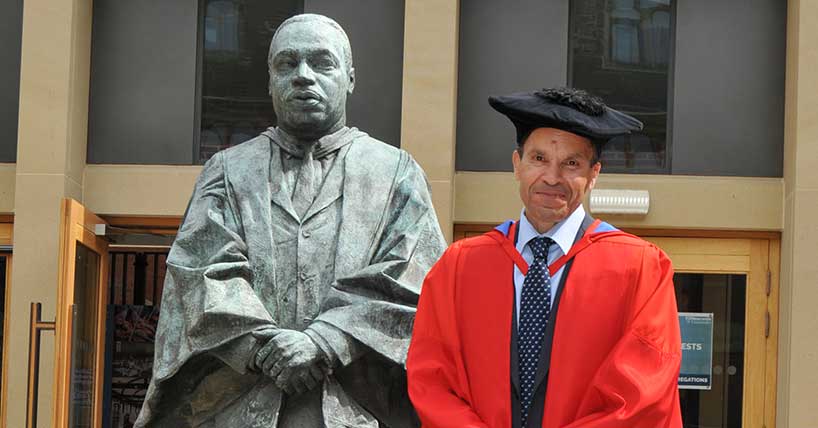Acute Myeloid Leukaemia research
Stopping the awakening of leukaemia stem cells to prevent relapse
Published on: 22 February 2024
Why myeloid leukaemias start to grow again after chemotherapy has killed the bulk of cancerous cells, and how growth may be blocked by repurposed drugs, may have been solved by new research.
The bone marrow of Acute Myeloid Leukaemia (AML) patients contains a rare population of leukaemic stem cells (LSCs) that do not grow and, therefore, are not killed by chemotherapy.
However, after treatment, these cells start to grow and produce AML cells, but it has until now been unclear as to what kick-starts this process.
In a new study, published in Nature Communications, experts from Newcastle University, the University of Birmingham and the Princess Maxima Centre of Pediatric oncology, studied single cells from patients with t(8;21) AML to investigate what made the rare LSCs grow.

‘Exciting results’
Professor Olaf Heidenreich, from Newcastle University and the Princess Maxima Centre of Pediatric Oncology, said: “An exciting result from these studies is the fact that the expression of these receptors is specific to this particular type of leukemia.
“They are expressed as a result of the presence of a specific disease-causing mutation giving rise to the onco-fusion protein, RUNX1::ETO, which reprogrammes the gene regulatory network that defines how a cell responds to outside growth signals.
“This work highlights the power of single cell analysis for digging deep into what regulates the growth of AML cells. It also highlights the fact that AML sub-types may have to be treated as a separate entities.”
The growth regulators, identified in this study were KDR, the receptor for VEGF signalling which is normally only expressed in blood vessels and the IL-5 receptor which is normally only expressed on eosinophils.
Moreover, VEGFA, the growth factor binding to KDR, was also expressed by the leukaemia meaning it could trigger its own growth.
Following identification of these receptors, the researchers confirmed that by activating them in the laboratory they were able to trigger stem cells growth.
Importantly, they also showed that growth could be blocked in a dish and in mice by repurposing drugs against VEGF (Avastin, approved for various solid tumours including colorectal cancer) and IL-5 signalling (Fasenra, approved for eosinophilic asthma).
Professor Constanze Bonifer, from the Institute of Cancer and Genomic Sciences at the University of Birmingham, who led the study, said: "Leukaemic stem cells normally seem asleep which is why they are not killed by chemotherapy, but we reasoned that something must trigger them to start growing in order for the leukaemia to come back.
“These cells are very rare and difficult to study but by examining gene expression in single LSCs we found genes being expressed that encode for growth regulators normally not present in myeloid cells.
“Both cell types are found in the bone marrow alongside the AML cells, but healthy stem cells do not respond to their signals. By aberrantly upregulating these growth regulators, leukaemic stem cells now can respond to growth factors that are present in the body and tell them to grow."
Preventing relapse
The first author of the study, Dr Sophie Kellaway, who is now continuing this research at the University of Nottingham, said: "We were very excited to find not one but two new, and potentially druggable, targets to prevent relapse in these patients.
“Being told your cancer has come back is devastating news and we want to prevent this happening. Unfortunately, as these receptors were so specific this would only work for t(8;21) acute myeloid leukaemia and is not a magic bullet.
“However, inspection of other single cell data from different leukaemia sub-types show that other growth regulatory pathways are upregulated in their stem cell population as well. We are now hoping to find those that can be hit in other types of AML" .
This work was funded by grants from Blood Cancer UK and the Medical Research Council.
Reference
Leukemic stem cells activate lineage inappropriate signalling pathways to promote their growth. Constance Bonifer et al. Nature Communications. DOI: doi.org/10.1038/s41467-024-45691-4



